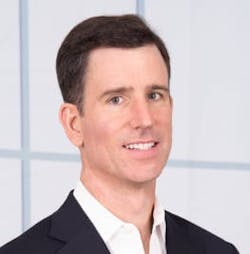The Renewable Grid: Challenging the Status Quo Part 1
The renewable grid landscape has grown more sophisticated with increasing levels of wind, solar and other clean generation coupled with battery energy storage. According to the National Renewable Energy Laboratory, there are now regions where renewable energy has grown to the extent that the instantaneous energy production meets or exceeds the regional energy needs for short periods of time.
The renewable grid is a concept that refers to the integration of renewable energy sources, such as solar, wind, hydro and biomass, into the existing electricity grid. The goal of the renewable grid is to reduce greenhouse gas emissions, increase energy security and diversify the energy mix. However, as the renewable grid expands and displaces legacy generation, transmission and distribution, there are obstacles to overcome for successful deployment.
With growth comes challenges
As professionals in the clean energy sector, we understand that renewables present challenges even as they offer numerous promising solutions. The variable nature of renewable resources – such as solar and wind – creates an intermittent capacity that doesn’t always match up with loads or that doesn’t optimally utilize fixed infrastructure like distribution and transmission capacity, requiring additional resource planning. Battery energy storage comes into the picture to firm this otherwise intermittent power source.
Notably, distributed renewable generation and battery storage is not only different in the way it is fueled, but also in the way it interacts with the grid. Rather than a fleet of spinning generators, the renewable grid marries clean power and elastic storage resources to energy demand using high speed power electronics in the form of power inverters.
IBRs - what they can and can’t do
Inverter-based resources (IBRs) are a source of electricity that is asynchronously connected to the electrical grid via an electronic power converter (inverter). Transitioning to an electrical grid that relies increasingly on these IBRs requires building smarter inverters that can respond to changes in frequency and other disruptions that occur during grid operations and help stabilize the grid against those disruptions. As IBRs grow on the grid, they are being asked to reproduce more of the traditional generation characteristics rather than just opportunistically conveying energy from renewable and storage sources.
While there are advantages to IBRs, including fast response, a lack of major “wear” components and a maturing field of products with wide coverage of residential, small commercial, and industrial applications, they do have limitations. Legacy IBR devices use what is called grid following (GFL) controls that can collapse during significant disturbances as they “follow” the disturbance. As GFL IBRs become a larger proportion of the grid, it’s not hard to imagine the risk of the grid collapsing during significant disturbances (downed power lines, generation failures, storms). A good analogy of grid following inverters is a group of novice whitewater rafters, where the paddlers generally synchronize ad hoc with the paddlers in the front of them. When the water is smooth, this works fine, but as the water gets rougher and the front paddlers tumble around or out of the boat, the remaining paddlers lose their rhythm and controlling the boat becomes more difficult.
In the real world, a disturbance in Odessa, Texas, in 2021 (known as the "Odessa Disturbance") saw 30 facilities in the state experience a change in active power caused by a fault with IBRs. This disturbance resulted in a reduction of more than 1,100 MW of solar PV resources spanning locations up to 200 miles away. This event previewed the need to revisit the design and settings used in grid-connected IBRs to keep the grid reliable.
Improving control with solutions and standards
Alternatively, IBRs can be designed with grid forming (GFM) controls. GFM control allows the IBR to continue operating even if it can’t “see” the grid – ultimately enhancing stability. Rather than novice rafters on vacation, imagine rowers on a crew team. The rowers face backward and follow the instructions of a coxswain who helps the crew stay in sync. The rowers don’t see the course in front of them and maintain their rhythm according to the coxswain’s instruction without directly reacting to the course in front of them. If there is a disturbance, their progress is more predictable and steady.
GFM IBRs can be mixed with legacy GFL inverters in a combined grid, lending stability without necessarily replacing legacy equipment. As IBRs become a larger part of the grid, GFM is becoming a requirement by grid operators and regulators. Despite the promise of GFM, the definition of GFM capabilities is today not entirely consistent. Contemporary IBR products don’t yet uniformly provide GFM capabilities, which can complicate procurement and implementation for those developing new plants.
Given the rapid rise of the renewable grid, projects in regions with pacesetting renewable adoption have identified risks to the grid reliability and stability we take for granted. Emerging technical solutions and changing rules and grid standards promise to mitigate these risks while providing enhanced tools and solutions for the energy user. Adoption of these new solutions and practices readies the grid for growth in clean renewable energy and flexible storage systems.
Stay tuned for Part 2 of this article, which will discuss complementing renewables with controllable load.

